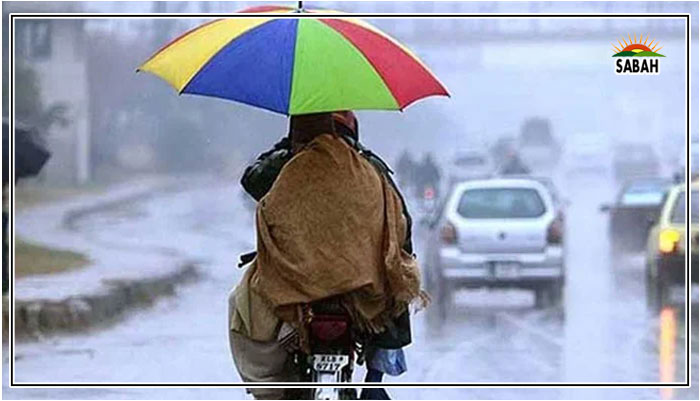Iran and Israel – hesitance to war …. Inam Ul Haque
On Saturday, October 26, Israel finally retaliated for the October 1, 2024, missile strike comprising about 200 missiles fired by Iran on Israel proper, leveling the recent round of escalation. Israel for the first time acknowledged striking Iran in this shadow war. Around 200 jets and support aircraft attacked Tehran and western Iran in three ways of stand-off attacks mainly staying over the Iraqi territory. Israeli targeting and Iran’s subsequent posturing indicate an end to the recent tit-for-tat attack series with no likelihood of further ‘intentional’ escalation.
First the Israeli targeting strategy. Israel attacked Iran’s missile factories, storage sites, air defence radar systems and other military targets (like Parchin military complex and Revolutionary Guards bases) near Tehran and in the provinces of Ilam, Khuzestan in southern Iran. IDF avoided attacking Iran’s nuclear sites, population centres and oil infrastructure, presumably because of the US pressure. While Washington claimed having no part in the attack, President Biden hoped the strikes were “the end” of the escalatory attacks by both sides and was apparently relieved that an uncontrollable Israel struck only the military targets. PM Netanyahu also provided alibi to the US saying IDF target selection was based on Israeli ‘national interests’, not under the American dictate.
IDF chose to target Tehran’s worrisome missile capability, employed against it twice this year, in April and October, wherein some missiles had sneaked through despite the Israeli ‘Iron Dome AD System’. Iranian use of decoys at some sites and lack of surprise in the Israeli attack also contributed to the scaled-down destructiveness of the IDF strikes, despite the criticism within Israel for not hitting Iran harder.
Technically, the warplanes, as per Iranian claims, used “very light warheads” apparently because of the route restrictions and the consequently reduced payloads. Due to Jordanian and Saudi airspace restrictions, IDF warplanes took the relatively longer route over southern Syria and Iraq (under 2,000 km one way) to attack south of Iran. Loiter and attack from Iraqi airspace was a compulsion to enhance warplanes’ time to remain airborne and avoid Iranian AD. Both the US-supplied F-16 (cruising range 340 miles/450 km) and F-35 (around 1,200 km) needed air-to-air refuelling, limiting their reach.
With a quoted figure of 200 planes in the attack, the attack echelon would have been further ‘light and less lethal’ if the refuelling tankers and planes for local AD, electronic warfare, and command and control are excluded.
In order to target the deeply bunkered strategic assets like nuclear infrastructure and other command and control centres etc, the IDF needed more planes for sustained revisits, larger munitions (like bunker busting 2,000 pounds US supplied bombs) hence heavier payloads. Heavier bombers with bunker busting and more potent munitions needed to enter the Iranian airspace for precision strikes, and hence were to remain vulnerable to the Iranian AD with S-300 and perhaps S-400 systems. Reportedly, the S-400 is more versatile and potent than Israel’s Iron Dome System, therefore America rushed the latest THAAD batteries to IDF.
Israel could have hit the targets of its choice in Iran through Jericho missile system, especially Jericho-3 with (range over 4,800 km), however, that missile system reportedly is not yest field-tested, and Jericho-2 was short in range (around 1,700 km). Through an aerial attack IDF also wanted to demonstrate its audacity and demonstrate its potency. Besides, in ‘missile economics’, Iranian arsenal comprises relatively inexpensive missiles (around $0.15 million apiece) compared to the IDF’s limited array of very expensive missiles ($2-3 million apiece). Iran’s tactics of swarming the ‘Iron Dome’ with inexpensive drones, allowing its ballistic and cruise missiles to sneak in, is also a formidable military capability that Israel cannot fight without Western, especially the US and UK’s support.
So, Tel Aviv was compelled to keep the counterstrike limited to air force, safe and quick, not only for ramifications of wider conflagration with Iran, the US’s reluctance and the world opinion, but also because of its own technical and military constraints.
Second, Iran’s response. In attacks’ aftermath, Tehran sounded conciliatory, declaring it was “entitled and obligated” to defend itself, but it “recognises its responsibilities towards regional peace and security”. Tehran also downplayed the consequent damage and claimed deterring the Israeli warplanes from entering the Iranian airspace. Iranian media also emphasised normalcy and reinforced the little impact of IDF attack by projecting routine functioning at Tehran’s Mehrabad Airport.
In his twilight years, Supreme Leader Khamenei faces a myriad of domestic challenges, Israel being a major one. The shift from fighting through proxies to direct military involvement with Israel is politically and economically costly, given Israel’s successes in hitting at Hamas leadership even inside Iran, and in Lebanon recently. Moreover, the growing domestic noise for Iran to go nuclear also puts the ruling clerics in a dilemma, as nuclearisation would mean ceding control of nukes to the military ultimately?much to their chagrin.
Third, the outlook. In one’s opinion, this is the end of ‘intentional’ escalation from both sides. The recent round will lead to de-escalation as Iran sees no reason and benefit in attacking Israel directly. Although Iranian response remained a continuum of the original incident of Israeli attack on Iranian Consulate in Damascus in April this year. Israel also has been able to re-establish its deterrence of ‘escalation dominance’ albeit in a much weakened form; and Iran retains potent military capabilities to hit back Tel Aviv. Hence, IDF’s statement?”If the regime in Iran were to make the mistake of beginning a new round of escalation, we will be obligated to respond.” Unable to rope the US in the conflict with Iran, Netanyahu is vulnerable to deadly overstretch politically, economically militarily and diplomatically.
Diplomatically, with countries like Saudia and Jordan denying airspace to IDF, and the Saudis condemning the attack as a ‘violation of Iranian sovereignty and international law’, the Middle East has surely changed under fears of a wider and more destructive all-out war. That next week. Pakistan, Iraq, Qatar, Egypt and the UAE have all condemned the Israeli attack. Turkey emphasised “putting an end to the terror created by Israel in the region” as a historic duty. And more importantly, the West Plus, especially the US and UK, do not want further escalation.
However, dangerously Netanyahu’s room for manoeuvre seems enhanced under election-induced lack of focus in the US.
Courtesy Express Tribune












